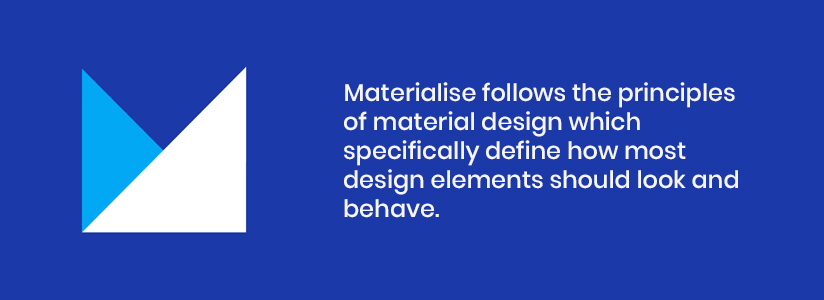Freewheeling with Design- Five Most Popular CSS Frameworks of 2018 for You
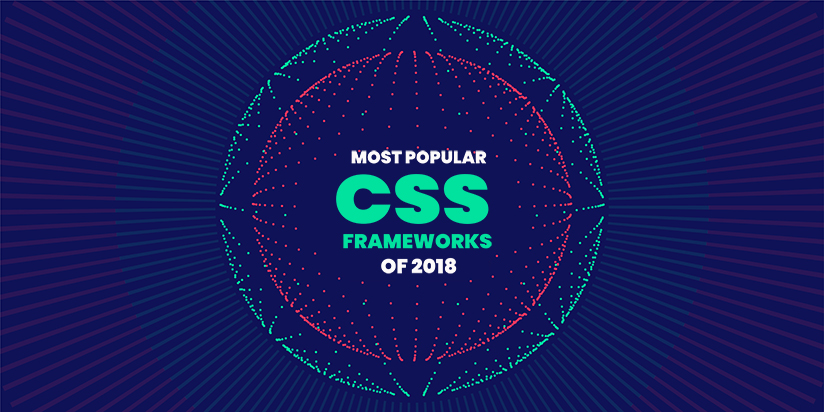
‘What does the customer want?’
As a developer, you wonder about, worry over, and meditate around it numerous times a day. After all, adapting any solution to a user’s need is as much a part of your job as is to filter through their requirements and pinpoint their needs.
CSS frameworks support you in such instances. They are efficient. Quick as well. They offer you facilities like multiple browser support, graceful degradation, pixel-perfect outlook, intuitive behaviour, etc. And, they lighten the drudge of design.
You get the drift! They are super-helpful.
And yet, When you decide to employ a framework for CSS designing, the question stares you in the face- which of the responsive CSS frameworks should help your objective? You can’t blindly trust any. Even though they exist to simplify your job, the costs must be calculated beforehand. And, not just the monetary ones.
Picking the Best CSS Framework- Why Is It so Critical?
These frameworks, essentially, offer a basic structure that you can use to design solutions for front-end web development. They are a bunch of generic functionality, a foundation of sorts that you can reuse to satisfy a specific scenario.
They provide structure, ensure organisation, save time, bring about consistency.
But, there are counterarguments to the case as well. For instance, a framework contains code that could be useless to you but will remain as an overhead to your application. You may find some developers complaining about how a website looks common when you use a CSS framework. Design grid is often stated as another complication since many developers prefer creating one by themselves.
Therefore, the answer to ‘Why is choosing a Responsive CSS Framework such a critical task?’, in a nutshell, depends on what you consider an excellent CSS tool.
Since you are basing a project on this tool, it must satisfy what you expect of it. And that’s why, before you can make a choice, it is paramount to assess what the framework can help you accomplish and if its functionality aligns with your needs.
5 Most Popular CSS Framework- 2018’s Best Picks and All That They Offer
A framework could be a single-page template or a bunch of CSS, JavaScript, server-side, and HTML programs. You’ll find grids, typography, plugins, colours, custom user interfaces, etc. in most CSS frameworks.
However, you can’t just choose one based on the features they possess. You must also consider the language, modularity, customizability, etc.
In this space, we shall discuss five CSS frameworks which stand out from the crowd of CSS frameworks, and for very specific reasons, are preferred to others.
1. Bootstrap
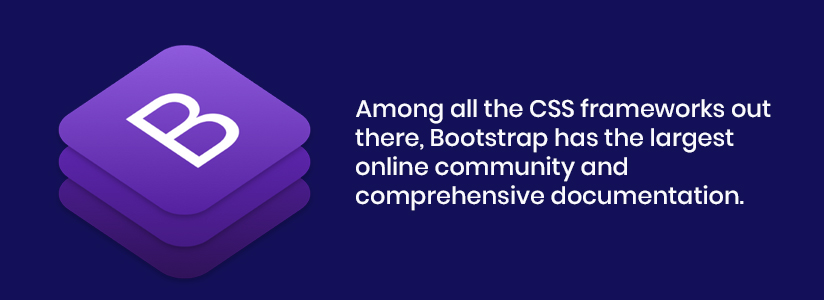
Initially called as Twitter Blueprint, Bootstrap is an open-source, free framework that has restricted itself to front-end web development. Mark Otto, the original co-developer, called Bootstrap a tool to document common design patterns and share them within the company.
Originally released in 2011, Bootstrap has received four major updates so far. With an increasingly developing GitHub fanbase, this responsive CSS framework is also popular amongst Joomla, Drupal and WordPress users.
Ease of Use
Besides being the most popular JS, CSS, and HTML framework, Bootstrap also sports a friendly user interface.
Bootstrap 3 introduces a great deal of convenience in creating responsive, mobile-first layouts. Its syntax, layout, and architecture are very intuitive. With a smooth learning curve, it is easy to adapt to Bootstrap, especially for beginners.
Bootstrap 3 supported LESS. However, that ended with Bootstrap 4, which is firmly invested into SASS. The CSS Preprocessor lets you create variables, functions, mixins, etc. quickly and easily.
Layout
Bootstrap has a 12-column system of grids, components, and layouts. Its powerful enough to resolve most positioning and responsiveness-related issues.
The choice between a responsive or fixed grid, fluid or fixed layout, and offsetting or nesting of columns is only a matter of minimal changes. And, you can choose to disable the automatic page responsiveness as well.
The framework doesn’t require media queries or extra CSS definitions. It supports column wrapping, which essentially means that every ‘row’ class can hold as many columns as needed. The style, position, spacing, and similar features can be tweaked using the Utility classes. It has built-in flexbox ordering, responsive column classes, and 5-grid breakpoints to fix the layout for different screen width on multiple devices.
Customisation
Bootstrap gives you all the needed amenities to quickly get a site up and running. To avoid the overly recognisable default Bootstrap appearance, the framework offers a wide variety of themes. You can also change the custom styling settings to alter the website looks.
Community
Among all the CSS frameworks out there, Bootstrap has the largest online community. Plus, the open-source history of this CSS framework gives it the advantage of well-organised, comprehensive documentation.
Any help regarding development can be found on the official Bootstrap blog, StackOverflow, the Bootstrap channel on the IRC server, and the Bootstrap Expo. The documentation is also available in 13 languages so far, including Russian, Spanish, German, French, and Chinese, which haven’t been officially provided but translated with the help of the Bootstrap community.
With ready-to-use templates and live examples explaining all the components of Bootstrap in depth, you won’t be lacking any development assistance because of the enormous support community.
Browser Support
Bootstrap is designed to work with the latest releases of most mobile and desktop browsers, like Chrome, Firefox, Internet Explorer, Safari, and Opera.
It also works with old versions. While that may alter the appearance of specific components, the website remains fully functional.
Plus, proxy browsers, like Amazon Silk, Opera Mini, UC Mini, etc. aren’t explicitly supported. That list also includes Chromium and Firefox for Linux. Although, unofficially, the framework behaves and looks just right in those browsers as well.
Themes, Templates, and Components
The internet offers a great deal of free, partially paid, and entirely paid Bootstrap themes. These include SEO friendly, CSS coded themes, AngularJS admin control panel snippets, etc. Some of the recommended vendors include ThemeForest, Boot Bundle, Bootstrap Zero, and Themewagon.
Problems with Bootstrap
- It is standard, easy to use, and customizable. Yet, not many opt for an in-depth design overhaul. Result- sites developed using this framework end up looking alike.
- It’s heavy. It’ll strain the server. And, on a bad internet connection, it may cause battery drain issues and slow loading.
- It may require several styles’ overrides.
2. Materialize
This lightweight CSS framework is designed and maintained under the hood of Google. It’s a UI component library created with JavaScript, CSS, and HTML, and elegant material design.
It is easily implemented by downloading the CSS and JS packages and integrating them on a local machine. It carries a pretty balanced combination of essential design principles like responsiveness and browser portability.
However, what puts this minimalist CSS framework on top of the game is its material design implementation.
Ease of Use
Materialize is full of convenient features.
It’s got numerous components like parallax elements, cards, hoverable objects, flow texts, simple installation, modern support, and default styling.
It follows User Interface design, which is simple. It supports hybrid mobile apps. It significantly reduces coding time. The installation is similar to that of Bootstrap. It is UX-focussed, which translates into a rich collection of components.
Layout
Materialize offers the fluid responsive 12-grid system. Its elements heavily utilise motion. While it may not have as many components as Bootstrap, it does offer impressive advantages like animation, responsive transition, depth effects like lighting and shadows, padding, badges, breadcrumbs, navbar, etc.
Customisation
Materialize was initially created for the rapidly flourishing entry-level web developers. Hence, the CSS framework contains several pre-configured components.
With the recent updates, it gives developers more control by offering increased programmatic customisation abilities.
The initial package download offers a CSS version and a SASS version. You still get predefined classes which simplify the creation of containers to place different UI components across a website. Additionally, in the latest releases, dependencies have been cut, and compatibilities have been improved.
Materialise follows the principles of material design which specifically define how most design elements should look and behave. It allows the user to customise a website while keeping it consistent yet unique.
Community
The official Materialize website offers support in the form of well-explained development routes, detailed documentation, and coding examples. The users can discuss matters with the Materialize developers and other users on a Gitter chat room.
Browser Support
Materialize supports almost all modern browser versions while actively trying to maintain itself for a few older browser versions as well. However, it is restricted to Internet Explorer 10+.
Themes, Components, Templates
You get over 700 material design icons. Components like Parallax, Toasts, and Modals are unique to Materialize. In addition to the JavaScript components, it also offers a rich collection of CSS and mobile-specific components.
Materialize has recently begun to offer paid themes with support, purchasable via its official website. Repositories like ThemeForest also provide a wide range of CSS themes for the purpose.
Problems with Materialize
- It has got slightly critical Javascript components, which a beginner may find complicated.
- Also, so far, Materialize hasn’t used flexbox, even though the developers have promised to introduce the feature in upcoming updates.
- Despite increasingly improving documentation, Materialize is still a growing service and can only afford to offer limited support to the users.
3. Foundation

Foundation is an open-source, front-end, mobile-first CSS framework that has been in the market since 2011. It was developed by Zurb to help create better front-end code quickly. It also extends its services to Emails and App development.
Ease of Use
Foundation is advanced. It’s easy to operate. It’s fast. It’s been used by brands like Amazon, Pixar, and Adobe.
With its library of tested components, compatibility with different back-end technologies, and relatively simple implementation techniques, Foundation offers some of the finest customisation abilities.
It has a robust grid system. It is easier for designers to use Foundation locally since the framework can run in a browser. It’s streamlined and straightforward, has useful product design constraints, is filled with features, and is frequently upgraded to remove redundant code.
Layout
Foundation gives you a robust XY grid by default to control the horizontal and vertical layouts.
It supports flexbox and float-mode. It has no containers. Its grid system is cleaner and relies entirely on rows. It offers features like block grids, collapsed gutters, and centred columns.
In addition to flexible breakpoints and responsive grids, it also supports responsive gutters, which are very easy to set up.
Customisation
Foundation is flexible to the point where its minimalist approach to UI design allows developers to create a unique product with ease.
It’s built on SASS and contains plugins like Abide, Interchange, and Equaliser, which make it easier to validate forms, create responsive content, modify elements, etc. You get a powerful JS animation library in the form of Motion UI. And, Foundation has the static page compiler Panini which handles templating, compresses code, compiles SASS, arranges JavaScript, and allows quick website creation.
The recently released version 6 of Foundation improved upon the preexisting system by introducing new features. These include:
- Built-in support for Right-to-Left languages
- A Flexbox compatible grid system
- Helper classes for website-style typography
- A single flexible navigation component
- New plugins like Sticky, elements like Badges, and events like Toggle
Community
Foundation has an active community spread across Twitter, GitHub, and Stack Exchange. The official Zurb website for this framework offers Email support and a forum where developers can discuss matters among each other.
Browser Support
Foundation supports latest versions of browsers like Chrome, Safari, Firefox, Opera, and IE9+.
A few of its features, like the Flexbox grid, can be disabled on will if the target browser doesn’t support it.
Themes, Components, Templates
Foundation is often termed as ‘un-styled’ since it is neutral when it comes to design. The developer is expected to supply whatever themes and styles they want and customise the website accordingly using components as per the client’s requirements.
Problems with Foundation
- There are no Inline forms in Foundation.
- You will need external CSS to enhance the looks of fields like select boxes and checkboxes.
- There is minimal out of the box design in Foundation as opposed to what you can find in Bootstrap.
4. Semantic UI
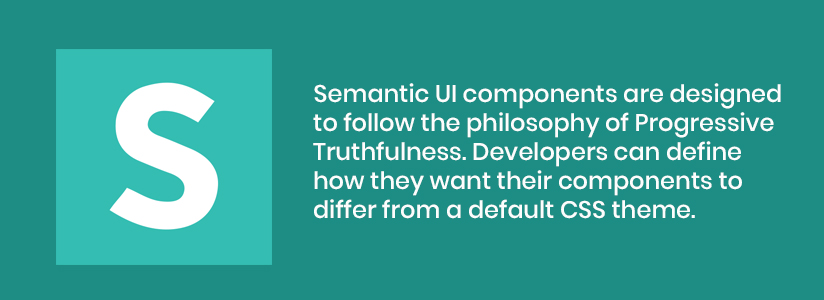
Let’s be upfront- Semantic UI is challenging. It has a complicated structure, difficult installation process, lots of JavaScript-based customisation.
And yet, the final product often turns out incredible.
The framework offers a range of components, lots of settings, a stunning design, well-organised packages, and a helpful load of documentation. A lot of Semantic UI features are unique. It offers support for 3D transformations, modal, element dimmers, etc.
Ease of Use
One of the major advantages of Semantic is that it works with human-friendly HTML and uses a shared UI vocabulary. The class names are closer to English. The CSS is easier to read. It helps users get used to the framework, learn to work with it quickly, and design more efficiently.
In the Semantic package, each component gets a dedicated file. You may choose to load only the ones you need for development. This organisation promotes the convenience of use as well as limited file size and reduced load time.
It is innovative, packed with features and design options, and is useful for a range of developers.
Layout
The recent updates to this framework brought in improvements like official SASS support, Angular JS framework support, and the ability to perform with any HTML tag, among others.
The default Semantic grid theme uses 16 columns. The theming variables can be altered to change the column number as well as other features. The layout doesn’t clutter up your classes.
Unlike Bootstrap, which is an excellent framework for different reasons, you don’t have to spend time overriding styles in Semantic. It also comes with several UI components, including ones for responsive mobile solutions.
Customisation
Semantic UI offers flexibility when it comes to manual customisations. It’s got extra elements. The personalisation potential in Semantic is higher than that in Bootstrap. And, it uses a lot of JavaScript customisations.
The semantic class names make styling and development more accessible to grasp. The framework is cohesive with several built-in tools to tweak the look and feel of a website. And, it is quite convenient to integrate with any website, including responsive ones, quickly.
The designing variations are built into the elements, so you can easily choose how your content will react on different devices. The framework supports integrations with libraries like React, Angular, Ember, Meteor, etc. That helps since developers are empowered to organise application logic and UI layer side by side with ease.
Community
The Semantic UI official website lets developers initiate a chat or ignite a discussion regarding their issues. The internet is also filled with several forums dedicated to the framework.
Browser Support
In a shell, the framework is compatible with all the browsers that work with React JS. That includes Internet Explorer 9+.
Themes, Components, Templates
The framework comes with a few pre-designed templates and an official WordPress theme. Plus, a good number of third-party sources offer a variety of themes for the framework.
Semantic UI components are designed to follow the philosophy of Progressive Truthfulness. Developers can define how they want their components to differ from a default CSS theme instead of designing one from scratch.
Problems with Semantic UI
- While you get a full-featured, front-end responsive framework in Semantic UI, you will have to settle with the absence of things like thumbnail classes and a basic image slider. It’s a trade-off.
- The packages are large, and the initial installation is time-taking as well as complicated.
- Plus, some custom workaround will be needed for a few specific solutions.
5. Bulma
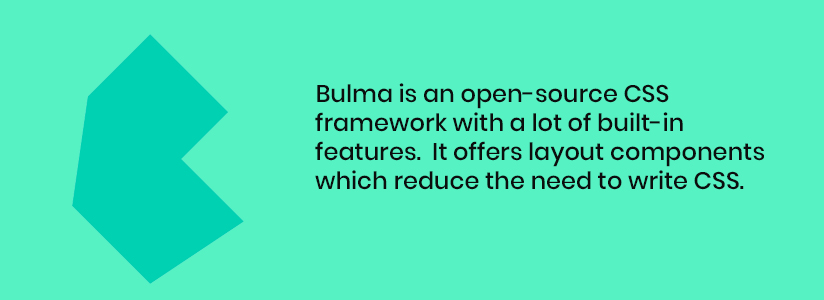
Bulma is what the mature trio of Foundation, Bootstrap, and Semantic UI aren’t.
This lightweight, stylish, and beautiful CSS framework is pure CSS. It’s very interactive, entirely based on Flexbox, and quite responsive.
Ease of Use
Bulma is an open-source CSS framework with a lot of built-in features. It offers layout components which reduce the need to write CSS.
The classes are a lot similar to what you get in Bootstrap. The syntax is pretty readable. It has a good deal of typography and responsive helpers. The customisable grid system is easy to use. And, since it focuses on CSS, the final code is lightweight and capable of being implemented into most developmental contexts.
Altogether, Bulma offers a designing principle which lets developers focus on defining the unique element of a website, as opposed to spending their time designing the code.
Layout
Bulma is entirely based on Flexbox. The grid is simple and helps in creating custom responsive designs.
It’s easier to create grid items, align columns, vertically centre elements, etc. using this framework. It offers a 12-column system, empty columns, offset modifiers, narrow modifiers, and tiles as well.
The layout is also immensely helpful if you need to understand how a particular component is codified.
Customisation
Bulma uses SASS variables to allow easy customisation. The code is spread across the component boundaries, locked in different files. The variables are also stored in separate files.
The advantage- you can modify every part of the app under development.
The grid system can be tweaked to change the viewport-based layout, sizes, gapping, nesting, etc. The layout components, especially Level, Section, and Hero, let you cast modifications without needing much custom CSS.
Community
Bulma is quite mature and stable for a CSS framework actively in development. Plus, it’s been established as a multi-purpose CSS tool in the development community. As a result, reasonably enough help can be found online for all levels of developers.
Browser Support
The framework supports latest browser versions, including IE 10 with some minor issues diagnosed so far, like vertical centring and speed concerns.
Themes, Components, Templates
Bulma uses idiomatic templates to help define a website design using semantic classes only. Many themes and templates can be found online for the framework.
Problems with Bulma
- Despite its breathtaking success as a CSS framework at such an early age, Bulma is still in the development phase.
- It is relatively new and lacks an extensive community as well as strong documentation.
Make a Choice Only after You’ve Accessed Your Needs
I already addressed the significance of picking the CSS framework that fits your project.
Bootstrap is the most popular. Foundation is the most flexible actor with a more behind-the-curtains approach to popularity. Semantic UI is elegant. Materialize is responsive and has the best material design implementation so far. Bulma is new, customisable, and a quick developer.
But, any one of these or any combination of these frameworks will only lead to a successful output if you know how to utilise their benefits in sync with your abilities as a developer.
Similar Posts
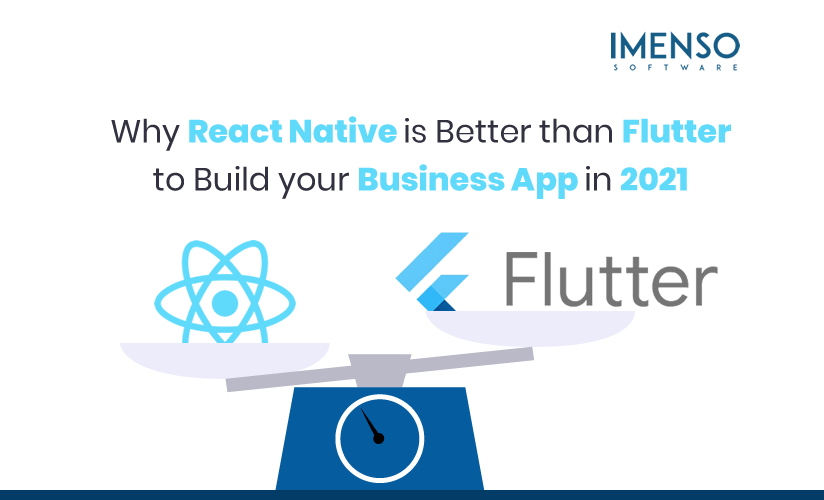
Why React Native is Better than Flutter to Build your Business App in 2021
The use of mobile devices has increased exponentially in the last decade. Today, we use it to make travel plans, order food, book cabs, and much, much more. Having an official company website isn’t enough in 2021. That is the major reason why every business, global or local has an app too to connect with customers on […]...

The Rising Trend of Mobile App Development in the Education Industry
Educational mobile apps are at their peak in popularity in the COVID era. It is no surprise that kids and teenagers like them equally as they create more interactive and visually supportive experiences for learning. Thanks to technology, schools and universities have continued the regular curriculum online without any facade or extra investment. ...

Best Web Development Frameworks In 2019
Frameworks have proven to be an indispensable part of the web development mix. As web application standards continue to rise, so does the complexity of the tech needed. However, it makes no sense to reinvent the wheel for such multifaceted technologies – that is if you can reinvent any of it. That is why using […]...
